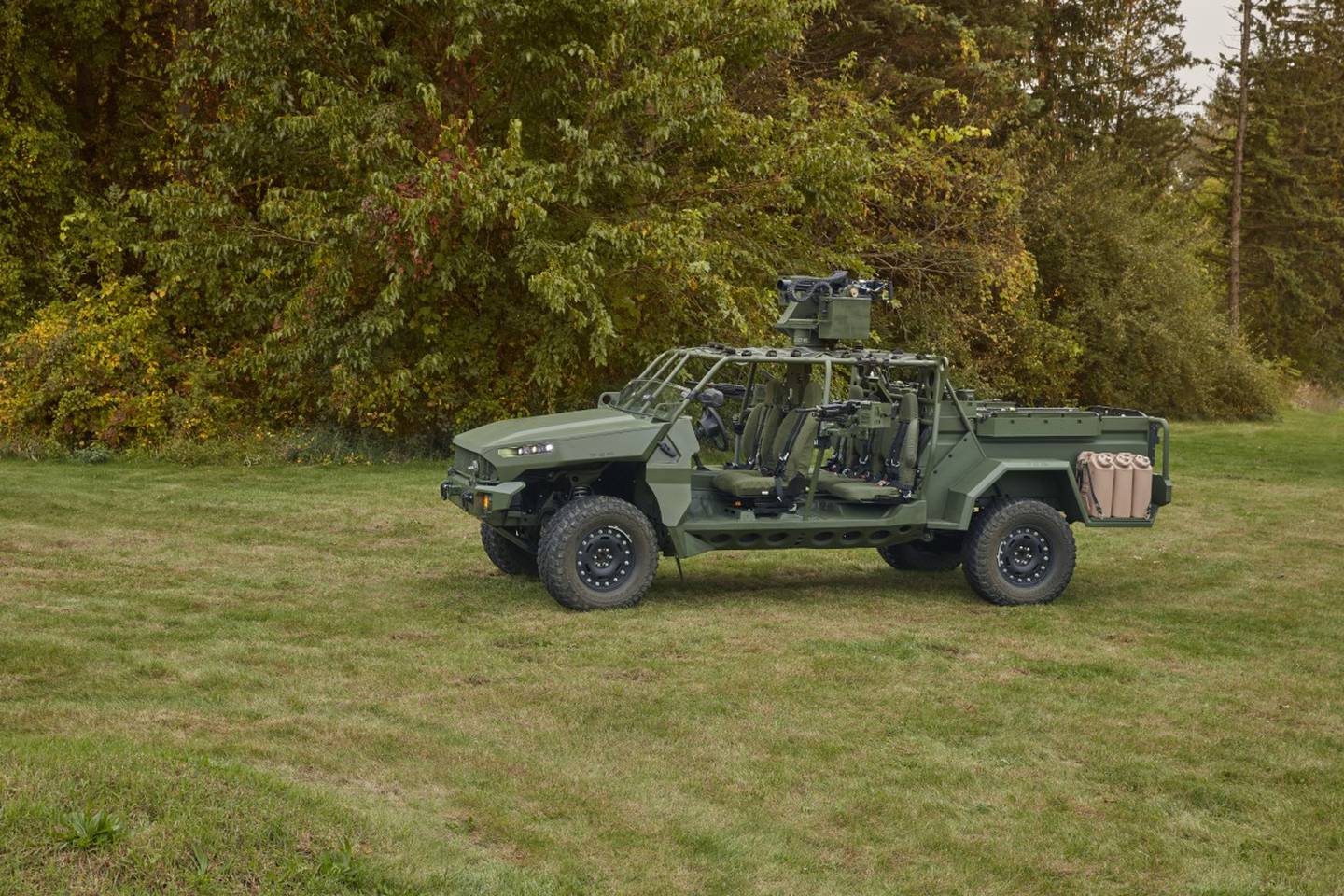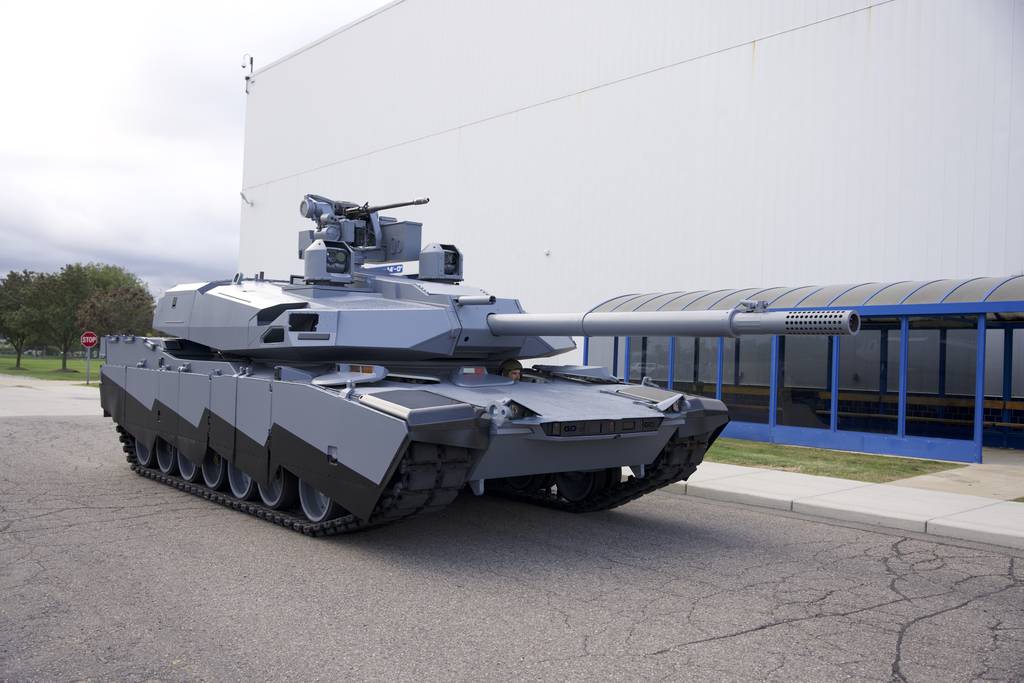WASHINGTON — For the defense industry, creating hybrid and fully electric vehicles for the U.S. Army isn’t about being eco-friendly: it’s about making soldiers more lethal and survivable.
The trucks increasingly feature radars, radios, weapons and other power-hungry mission modules. The Army wants the ability to operate quietly and to lessen its heat signature, pointing toward battery power rather than a running motor. And the less troops rely on refueling, the more agile they are during operations.
To bring these benefits and more to the battlefield, GM Defense is taking a swing at fully electric vehicles. With parent company General Motors making a $35 billion investment in the underlying technology for its Ultium base platform used in commercial vehicles, GM Defense President Steve duMont said he can leverage that work for the Army.

After GM Defense won the Infantry Squad Vehicle contract in 2020, the company used its own research and development dollars to rip out the internal combustion engine and put in a fully electric motor. That’s still an internal effort, but the company sold a Hummer EV to the Army so the service can begin testing the Ultium technology in a tactically relevant environment, duMont said.
He believes it’s “inevitable” the Army will get to an all-electric fleet due to the operational benefits. But he acknowledged there’s not much of an infrastructure yet to recharge these vehicles at the tactical edge.
That leads him to two ideas: GM Defense and its partners can pursue hybrid technologies as a steppingstone, and they can pursue concepts to bring power to the battlefield.
Plasan North America’s All-Terrain Electric Mission Module, or ATeMM, seeks to address both. The modules can be remotely controlled or towed behind a lead vehicle.
John Cavedo, the company’s president, said ATeMM started as an effort to create a smart trailer that could better traverse tough terrain under its own power behind a lead vehicle. It morphed into something much more.
“I am quite convinced that this can replace towed generators, this can replace towed trailers, this can potentially augment or replace some of the Robotic Combat Vehicle-Light platforms that people are looking at. So I think this is really a multitool,” Cavedo said.
GM Defense is eyeing the trailer as a means to recharge all-electric vehicles in the field. But Cavedo said the ATeMM has the potential to become a mobile microgrid as well, or to convert gas-powered vehicles into hybrids.
Technology and innovation manager Dan Jakiela explained the ATeMM could push the lead vehicle to which its hitched, either creating better fuel economy while the vehicle’s motor is running, or allowing for so-called silent watch mode, which lets the vehicle run its communications systems and sensors while the motor is off.
“How do we leverage 100,000 existing tactical wheeled vehicles that are already in the fleet? How do we leverage those millions of dollars that have already been spent, and be able to hybridize those vehicles as an interim bridge, as other companies such as GM Defense come along with a purpose-built hybrid or with a purpose-built EV? This can become a great bridge,” Cavedo said.
These purpose-built hybrid systems are taking shape in different ways, with General Dynamics Land Systems creating distinct platforms to optimize different features of its ground vehicles. For its part, BAE Systems is opting for a common system that can be scaled to support vehicles of different sizes.
Tim Reese, the director of business development for GDLS, said its StrykerX hybrid is optimized to move at high speeds and longer distances on battery-only power, allowing for silent operations when needed. The AbramsX tank, on the other hand, sought to reduce the size of the engine, which is quite large to allow the platform to perform in the most strenuous conditions. Its hybrid electric drive was focused on using a smaller and lighter engine that can provide enough power for the bulk of the tank’s operating profile, with the battery providing an extra boost in especially tough conditions.
BAE Systems has a scalable hybrid system that can fit vehicles of 30-60 tons, which covers the whole portfolio except the Abrams tank and the recovery vehicle, according to the company’s director of business development, Jim Miller.
BAE has already delivered two hybrid Bradley fighting vehicles to the Army for testing, which Miller said have already gone to several exercises.
The service may go on to test a whole platoon or company of these vehicles before committing to the hybrid system when they fully understand the technology and the operational benefits. Miller said he hopes success with Bradley vehicles could pave the way for adding hybrid drives to howitzers, Armored Multi-Purpose Vehicles and more.
“You’d have a common hybrid-electric-drive platform in the brigade, which, if the Army wants that and can afford that, that could be a really substantial step for them to take,” Miller added.
Megan Eckstein is the naval warfare reporter at Defense News. She has covered military news since 2009, with a focus on U.S. Navy and Marine Corps operations, acquisition programs and budgets. She has reported from four geographic fleets and is happiest when she’s filing stories from a ship. Megan is a University of Maryland alumna.








